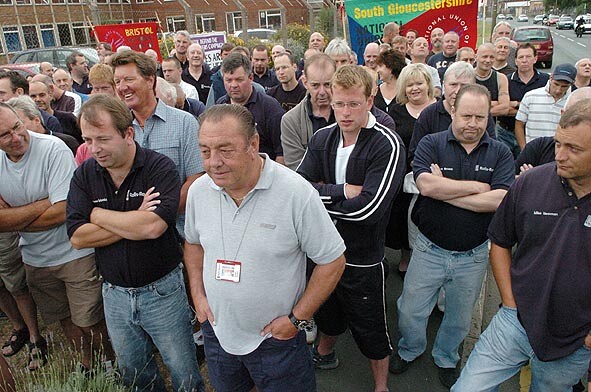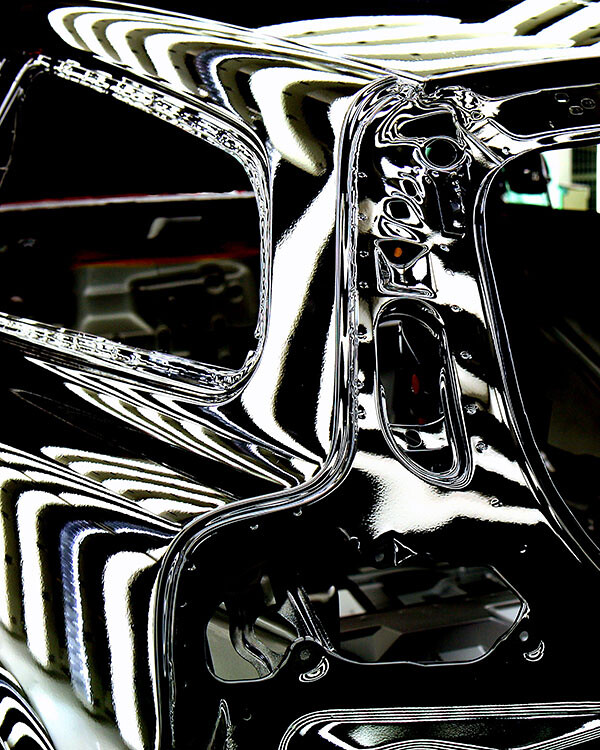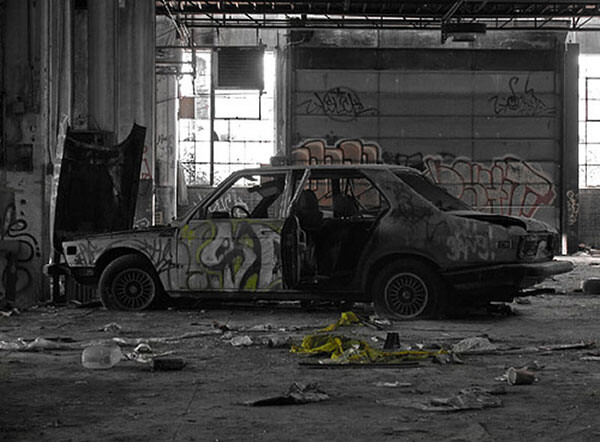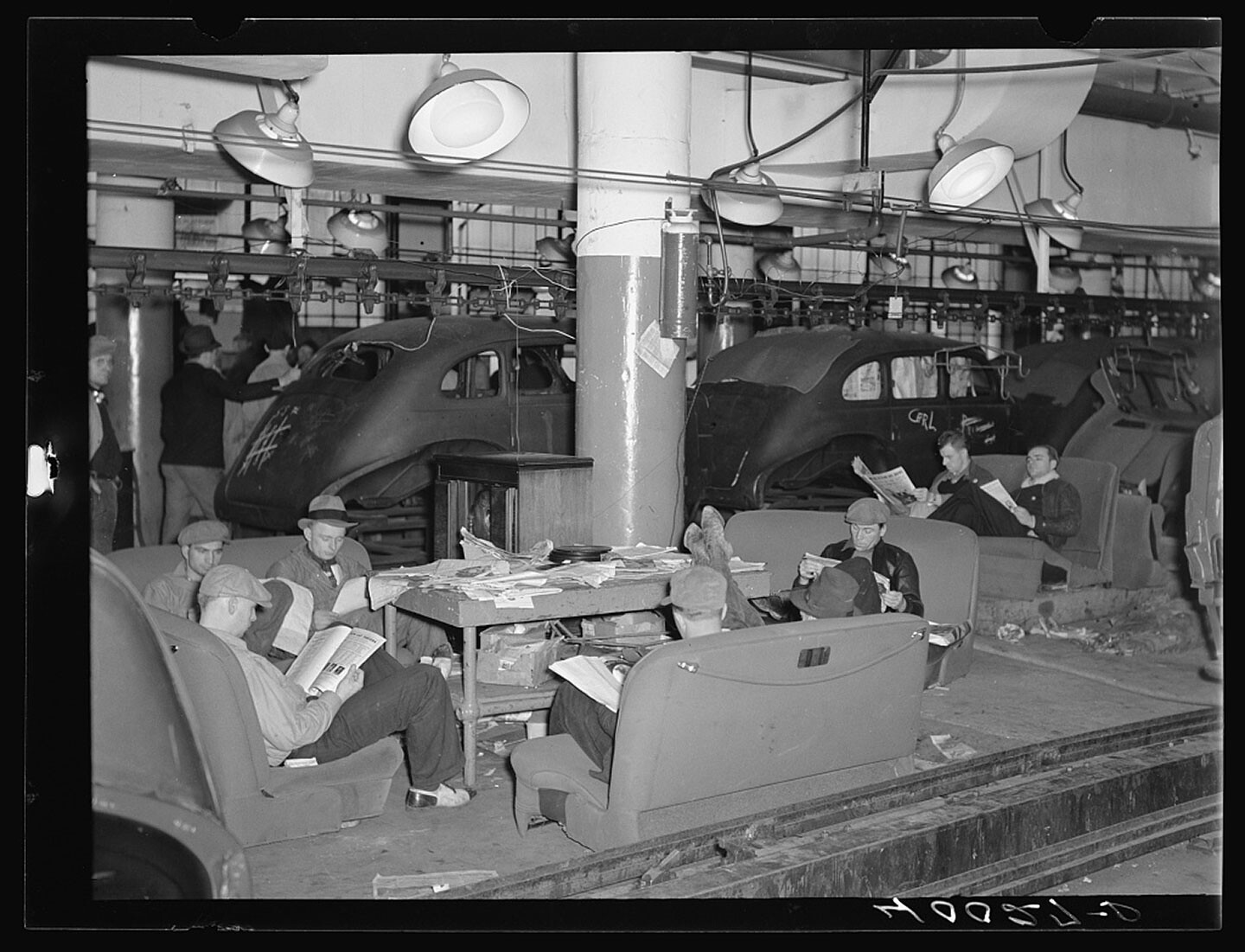Some people are the motor of the event. Like an animator bringing characters to life. A character is drawn and through this process is free to behave in whatever way the animator wants it to. At our event you don’t know exactly who animates who, but it is definitely taking place. Everyone is part of the same story, but with separate lives. They are in the style of recent Manga comics from Japan, where each character has a complex formulation that frequently changes from episode to episode or from story to story. Narratives are stretched and the stories have no specific end. The active people sometimes prefix a name with “our,” as in “our Wallace” or “our Hugh.” Each participant could be the son or the daughter of another person at the party. You never notice this, but these relationships give some of the interactions between people, an aim, and a story.
There are also passive groups at the event. Maybe they are just visitors observing the party. They don’t react much. They read a lot, talk a great deal and sometimes exchange pictures. In the same way that children make collections of things, the passive groups pass pictures around. It is not clear what they say to each other. Mumbling a bit. Conversations that are always difficult to overhear.
—Philippe Parreno, Snow Dancing, 1995
A discursive model of praxis has developed within the critical art context over the last twenty years. It is the offspring of critical theory and improvised, self-organized structures. It is the basis of art that involves the dissemination of information. It plays with social models and presents speculative constructs both within and beyond traditional gallery spaces. It is indebted to conceptual art’s reframing of relationships, and it requires decentered and revised histories in order to evolve.
If we want to understand tendencies in art, we have to look at the structures that underscore the sharing of ideas. This is especially true when we consider discursive processes to be the base of self-conscious art practice. It is necessary to find a way to describe, map, and analogize the processes that have actually been taking place under the surface of recent models of curating and artistic practice. I’m trying for a moment to get away from anecdotal, local, and geographical relationships to artistic activity and away from “special event” consciousness. At the same time, I want to look at echoes in the culture that might provide a clue to parallel productive techniques.
The discursive is the key strategy employed by the most dynamic contemporary artists, whether they are providing a contribution to a larger model of exchange or using discursive strategies as a structural tool within their own work. I am trying to test the validity of this discursive framework in light of what has developed in the culture since the fall of The Berlin Wall. There are some returns and absences that may affect our ability to continue as before. We also need to examine the notion of the discursive as a model of production in its own right, alongside the production of objects for consideration or exchange. The discursive is what produces the work and, in the form of critical and impromptu exchanges, it is also the desired result.
The use of the word discursive includes the following considerations: first (a technical definition), the movement between subjects without or beyond order; second, a set of discussions marked by their adherence to one or more notions of analytical reason. At no point does my use of the word really imply coherence with notions of “discursive democracy” as posited by Habermas and others, yet within the cultural terrain it does have some connection to the idea of melding public deliberation while retaining the notion of individual practice within the “group.”


An unofficial strike action at the Rolls Royce engineering plant in Bristol, 2005.
The discursive is a practice that offers one the opportunity to be a relatively unexamined, free agent within a collective project. While the discursive appears to be an open generator of positions, it actually functions best when it allows one to “hide within the collective.” It allows the artist to develop a set of arguments and individual positions without having to conform to an established model of artistic or educational quality. Incomplete projects and partial contributions are central to an effectively progressive, critical environment, but in the discursive they are not expressed—rather, they are perpetually reformed. The discursive needs to preserve this sense of reclaimed speculation in relation to “lived” future models if it is to retain its semi-autonomy in relation to instrumentalizing or divisive, chaotic and insincere market rationalizations.
The discursive framework differentiates certain collective models, not the other way around. It is a mode of generating ideas and placing structures into the culture that emerges from collaborative, collective, or negotiated positions rather than as varied forms of “pure” expression or super-subjectivity. However, the discursive also provides a space where all these approaches can be included. The rise of content-heavy discussions—seminars, symposia, and discussion programs—alongside every serious art project over the last twenty years is very significant here. This phenomenon has given us a lot of time to excuse ourselves, to qualify ourselves and to provide an excess of specific positions that are not necessarily in sync with what is presented in the spaces for art. These discussions are functional parallels that project in many directions. They are free zones of real production. They have also become an essential component of both didactic and contingent projects. Yet the discursive as a form of art practice in its own right is not reliant on these official parallel events. It both goes beyond and absorbs such moments, making them both material and structure, operating openly in opposition to official programming.


An image from the Volvo Cars’ plant in Ghent, 2007.
The discursive leads to the proliferation of the short text and statement, which both cover up and announce. The site of production today often exists within the text alone. The text is the key event, the key moment, the idea carrier as well as the collective project itself. The critical text is also the voice of the curatorial context. The site of the critical text is now often produced by the person who is an implicated multiple personality within the cultural field. The anxiety of contemporary curating is not the cliché of the idea of the curator as mega-artist or the curator as neurotic traveler. The anxiety is that the critical voice has been merged with that of the curatorial. A misunderstanding has emerged here in the reaction to relational aesthetics, with the implication that this curatorial voice directs the critical flow. But this analysis of relational aesthetics got the moment of engagement the wrong way round—critical self-consciousness was activated before the predictive text backtracked and set the scene.
This is a common phenomenon of the discursive: the post-description of critical awareness, often in a straightforward form. The idea of a directed series of actions comes after the negotiated quality of the discursive. Moments of entry into the critical framework are muddled and inverted as a result of the struggle over the text having been transferred (as an anxiety) from the artist to the curator. Yet we still make assumptions about critical potential emerging from the moment at which a flow is identified, rather than from the flow itself.
Recently we have seen the rise of a new group of people who have studied art history but have resisted or found no place within the standard systems of curating. This new “non-group” has not been completely identified, manipulated, or instrumentalized by the dominant culture, yet. They appear to be deeply embedded within hierarchical academic structures, but also do not deal with the merging of voices that constitutes a symbiotic alliance between the discursive and the curatorial. They have studied art history but do not all want to be curators—or traditional critics, either. They have started developing a series of relationships, discussions, and texts that have created a new series of links between the potential of the discursive framework and much more traditional forms of academic work. The greater part of this new work is focused on trying to understand where the critical flow exists within the culture.
All of this is based on the understanding that statements are also events. Statements depend on the conditions from which they emerge, and begin their existence within a field of discourse. Statements as events are important within the discursive—they provide a “location” from which to propose a physical potential beyond the immediate art context. Putting a statement into play will create an event “at some point”—or a series of events projected into the near future to recuperate the recent past.
By the time a generation born in the early 1960s had become activated recipients of a postwar social dynamic, they were simultaneously told that the physical manifestations of it—in varied forms of applied modernism—were failing. They were told that they were within something that might appear to be succeeding and functioning in theory, but that certain markers of progressive modern existence were not functional, wouldn’t work, and no one wanted them. Reconfiguring the recent past accounts for this tension. It is a crucial component of a desire to be involved in a discursive frame that is often marked by architectural and structural legacies of the recent past—from public housing projects to communal experiments—which were viewed as a failure on both the right and the left.


At the heart of the discursive is a reexamination of “the day before” as a model for understanding how to behave, activate, and present. It tries to get to the point just before the only option was to play the tuba to the workers. In the past I have used this quite frequently as a device: the day before the Brass Band became the only option; the day before the mob became the workers; the day before the factory closed; the day before Hotel California was released—the idea of a French bar in the middle of nowhere, with nothing to listen to and everyone waiting for the arrival of the “soft” future.
The role of the discursive is to not look back too far. However, this creates peculiar problems. Reoccupation, recuperation, and aimless renovation are the daily activities of a unified Europe, and the function of the discursive framework as well—creating engagement and providing activity. However, the intellectual and ideological implications are rather more problematic.


We are currently in a situation in which suspension and repression are the dominant models. There is anxiety about who controls the reshaping of the stories of the recent past. The discursive framework has been predicated upon the rejection of the idea of a dominant authored voice. Clear-cut, authored content is considered to be politically, socially, and ideologically suspect. However, there is still the feeling that stories get told, that the past is being reconfigured, and that the near future gets shaped. There is a constant anxiety within the discursive frame about who is doing this, who is marking time. The discursive is the only structure that allows you to project a problem just out of reach and to work with that permanent displacement. Every other mode merely reflects a problem, generates a problem, denies a problem, and so on. The discursive framework projects a problem just out of reach, and this is why it can also confront a socio-economic system that bases its growth upon “projections.” In the discursive art process we are constantly projecting. We are projecting that something will lead to something else “at some point.” True work, true activity, true significance will happen in a constant, perpetual displacement.


View of Mies Van Der Rohe’s the Dominion Center, Toronto, 1968.
This permanent displacement provides a location for refusal and collective ennui. The projection of the critical moment is the political potential of the discursive. It is not a location for action, but instead provides an infinite suspension of critical moments—the opposite of performance. This is its “just-around-the-corner-ness”—a permanent interplay of micro-critical expressions within the context of a “setting.” Projects are realized that expose a power relationship with the culture. They achieve this through an adherence to parasitical techniques: destroying relations of production through a constant layering of profoundly differing and contradictory aims. Somehow it might be possible to bring together small groupings and create temporary, suspended, semi-autonomous frameworks. It is possible that we have seen a rise in the idea of parasitical relationships to the point where they have reached a fluid state of acceptance. We may have reached a moment of constant reoccupation, recuperation, and aimless renovation. Maybe the discursive makes possible a parasite without a host—feeding off copies of itself, speaking to itself, regenerating among its own kind.


Sheldon Dick, Sitdown strikers in the Fisher body plant factory number three. Flint, Michigan, 1937. Photo: Library of Congress Prints and Photographs Division Washington, D.C.
The discursive demonstrates a clear desire to produce situations that are open and exchange-orientated in tension with the forces that encourage self-redundancy. It is an activation of counter-methods: we’ve had flexibility and now we are redundant, yet we refuse to stop working. The discursive cultural framework is the only way to challenge the forces that encourage self-redundancy, as it internalizes and expresses consciousness of the most complex and imploded forms of post-Operaistic models of developed capitalism—the notion that capitalism mutates in the face of a reluctant workforce rather than due to some naturalistic quality or due to its own drive. Teamworked, flexibilized environments are also a way to induce people to create predictive models that are resistant to true projections of future circumstances. Everything is permanently conditional and contingent and needs to be predicted in speculative form.
This phenomenon is combined with the increased sophistication of the dominant culture in finding ways to use and absorb earlier critical structures, in order to create a degree of information control. The discursive adopts and co-opts this structural approach too but to different ends. It is the only way to offer a functional parallel to the dominant culture. In a discursive frame, there is always a critical double that has a degree of parallelity with the machinations of globalized capital. The discursive always functions in parallel, or just across from the idea of something that is already taking place structurally within society—this is its strength and its weakness.
The political potential of the discursive framework comes from its being simultaneously “out of reach” and “too close”—it is art functioning as a structural parallel to contemporary working dilemmas in the dominant culture. In a discursive frame there is always an element that parallels the machinations of globalized capital—that is both its strength and its weakness. It starts from the position of understanding the process of redundancy-via-flexibility, and it co-opts that process for different ends, in order to redirect its apparent loss.
Category
Subject
→ Continued in issue #3: Maybe it would be better if we worked in groups of three? Part 2 of 2: The Experimental Factory

